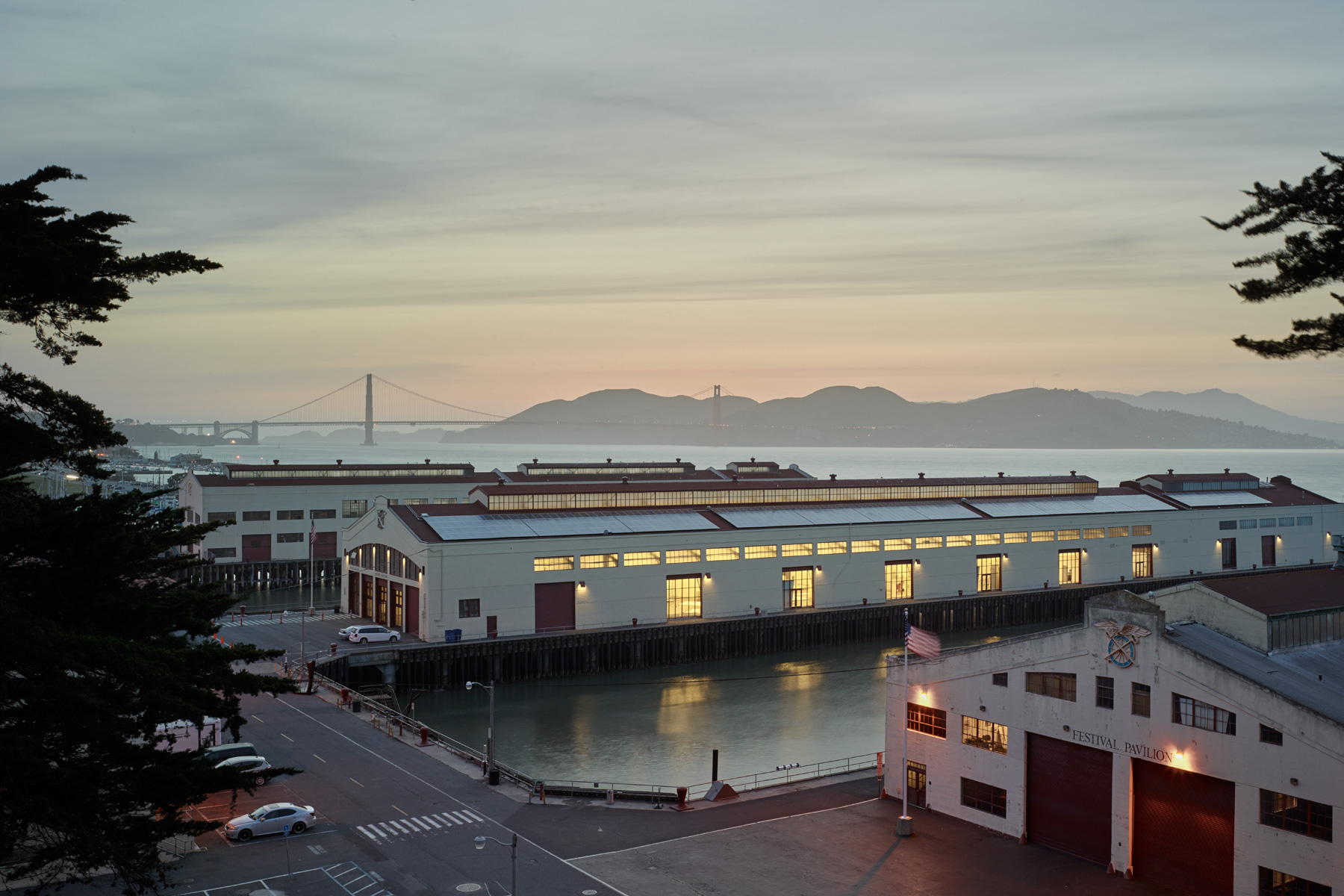
In the past year, audiences at the Cowell Theater in San Francisco’s Fort Mason Center have watched flamenco and ballet dancers, taken in musicals and plays, and attended the annual San Francisco International Arts Festival. What those attending may not have known is that until its reopening in August 2014, the more than 100-year-old pier structure housing the theater and exhibition space had been deteriorating from decades of exposure to a harsh marine environment. The recently completed rehabilitation, seismic repair, and energy efficiency upgrade have preserved Fort Mason Center as a cultural and community resource.
Story By
Marsha Maytum
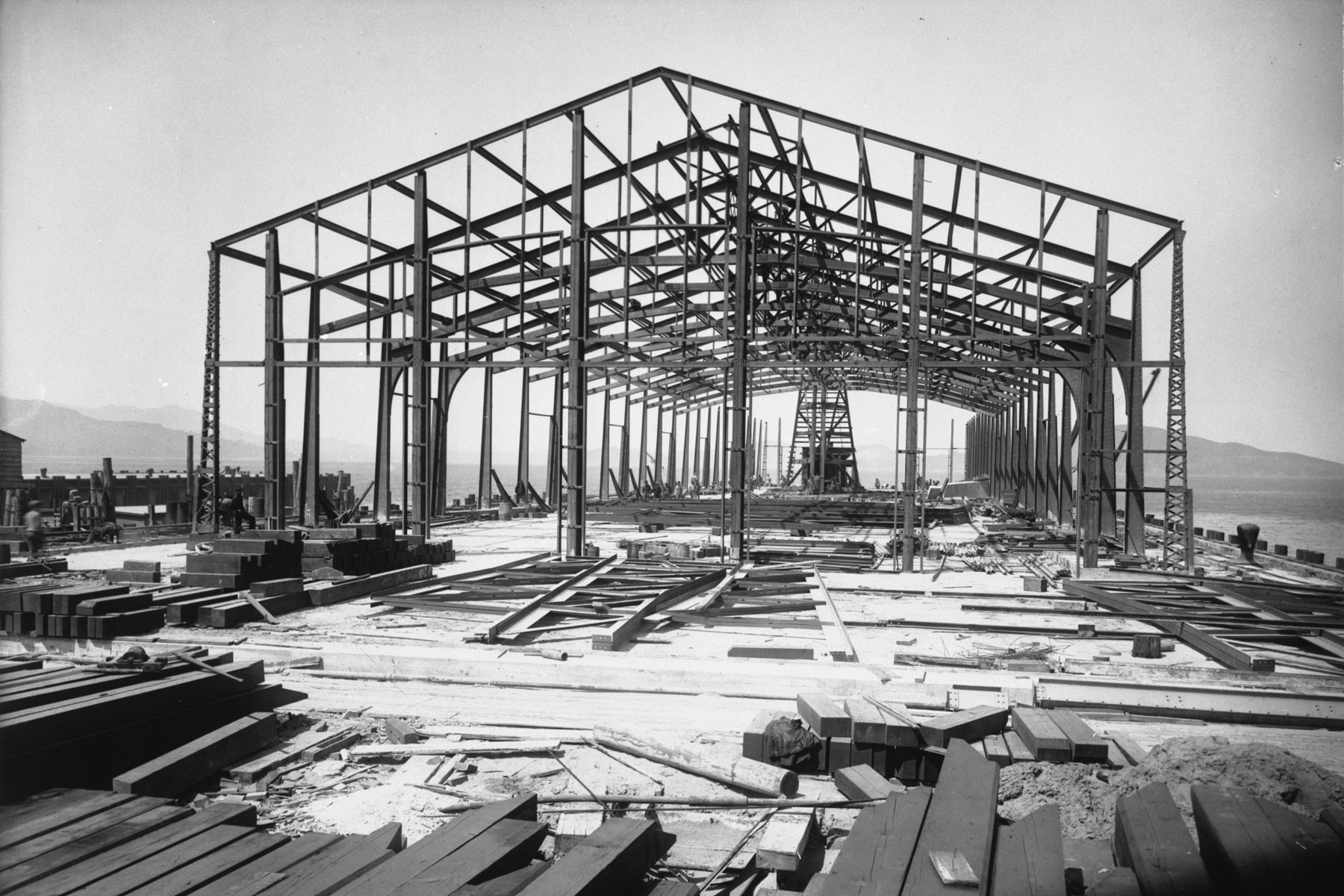
Built in 1912, the Fort Mason Center served a key role in World War II as the Principal Port for the Pacific campaign and ceased operating as an army base in the 1960s. Since the transfer of lower Fort Mason from the Army to the National Park Service and then to the non-profit organization in 1977, there has been an amazing transformation of the Pier 2 Shed from a place serving the war effort and sending men off to fight to a vibrant cultural center serving as a community space for thousands to gather and celebrate the arts. Fort Mason is a nationally recognized model for the transformation of historic military bases into a successful non-profit community arts and cultural center.
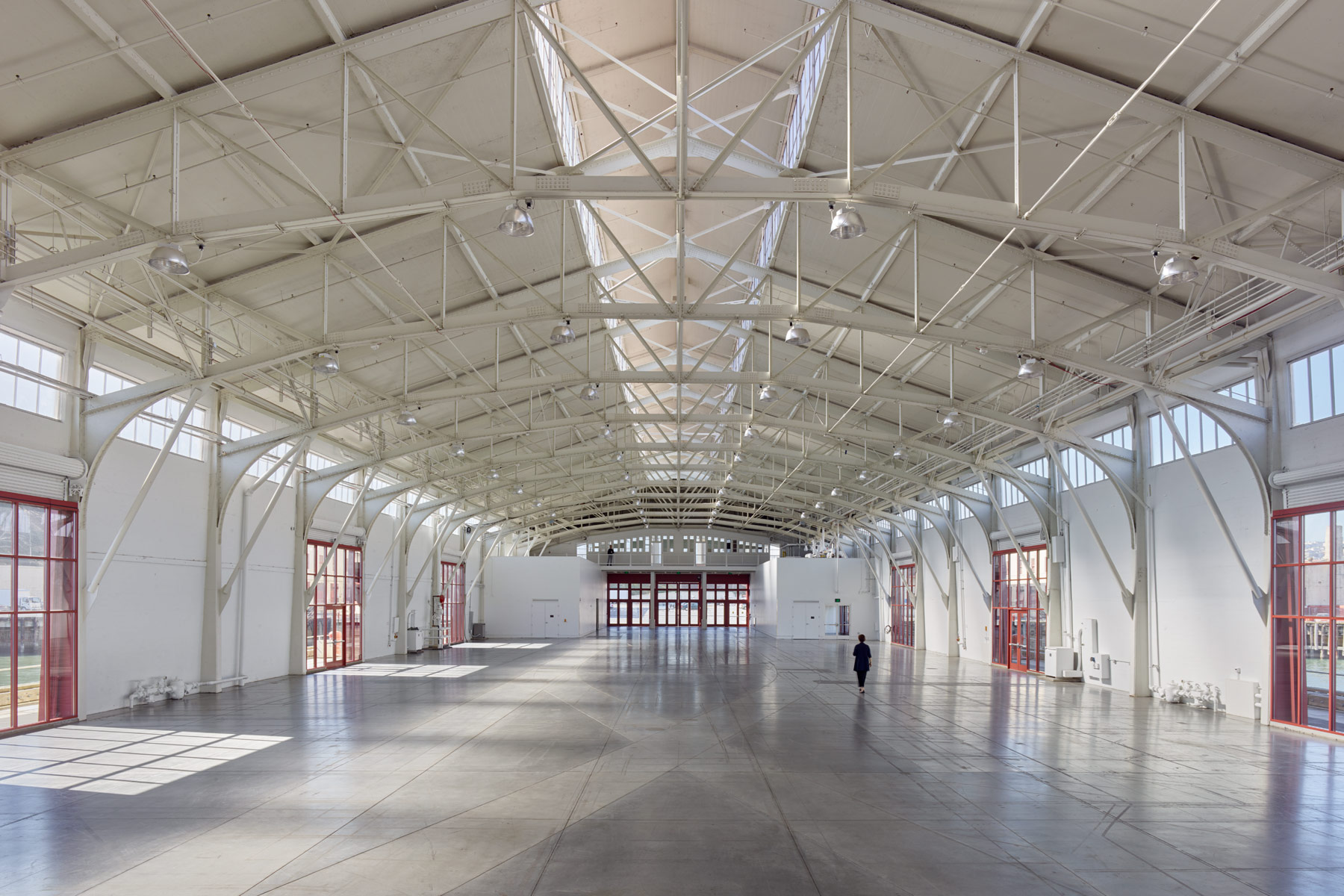
Fort Mason Pier 2 qualified for the Federal Historic Preservation Tax incentives program, which requires a renovation to follow a variety of standards when a historic building is repaired or altered for contemporary use; the repairs and alterations must not damage or destroy materials, features, or finishes that are important in defining the building's historic character.
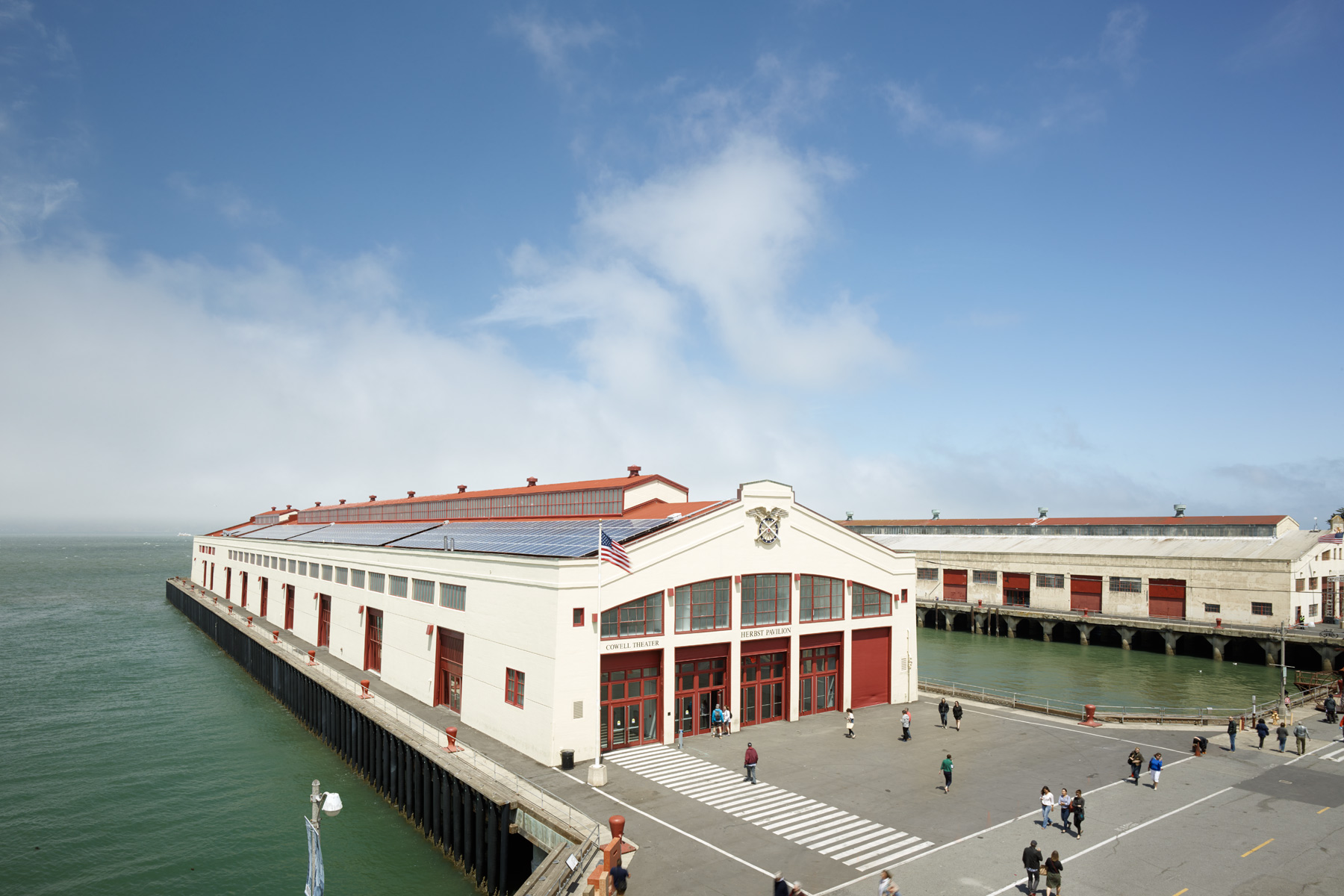
The renovations incorporated a variety of sustainability strategies, including installation of a 255-kilowatt photovoltaic (PV) solar panel array that meets up to 85 percent of the building’s electricity needs, an economical heating/cooling system that incorporates cool bay air, radiant-floor heating, enhanced building insulation, and high-efficiency lighting. Installation of a large PV solar system on a highly visible historic landmark required extensive negotiations with the National Park Service and the California Office of Historic Preservation. The low-profile mounted PV system selected is in keeping with the industrial character of the historic structure. The renovations complied with the National Park Service's sustainability guidelines
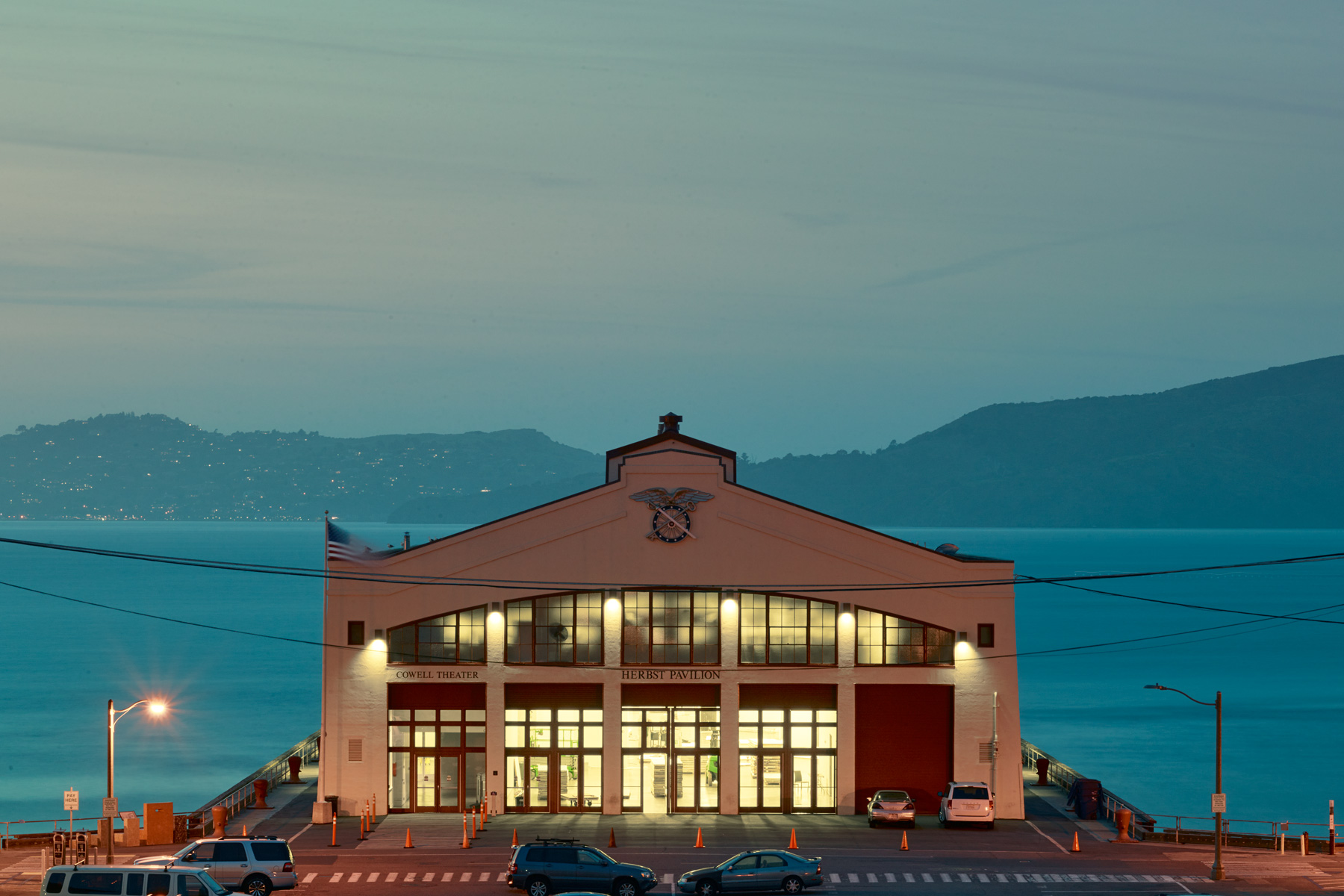
The completion of this significant rehabilitation will ensure that this important landmark will be preserved for the next generations and continue to provide important cultural and arts activities for the surrounding communities and finally, stand as a model for public private partnerships taking on environmental and cultural stewardship of our resources.